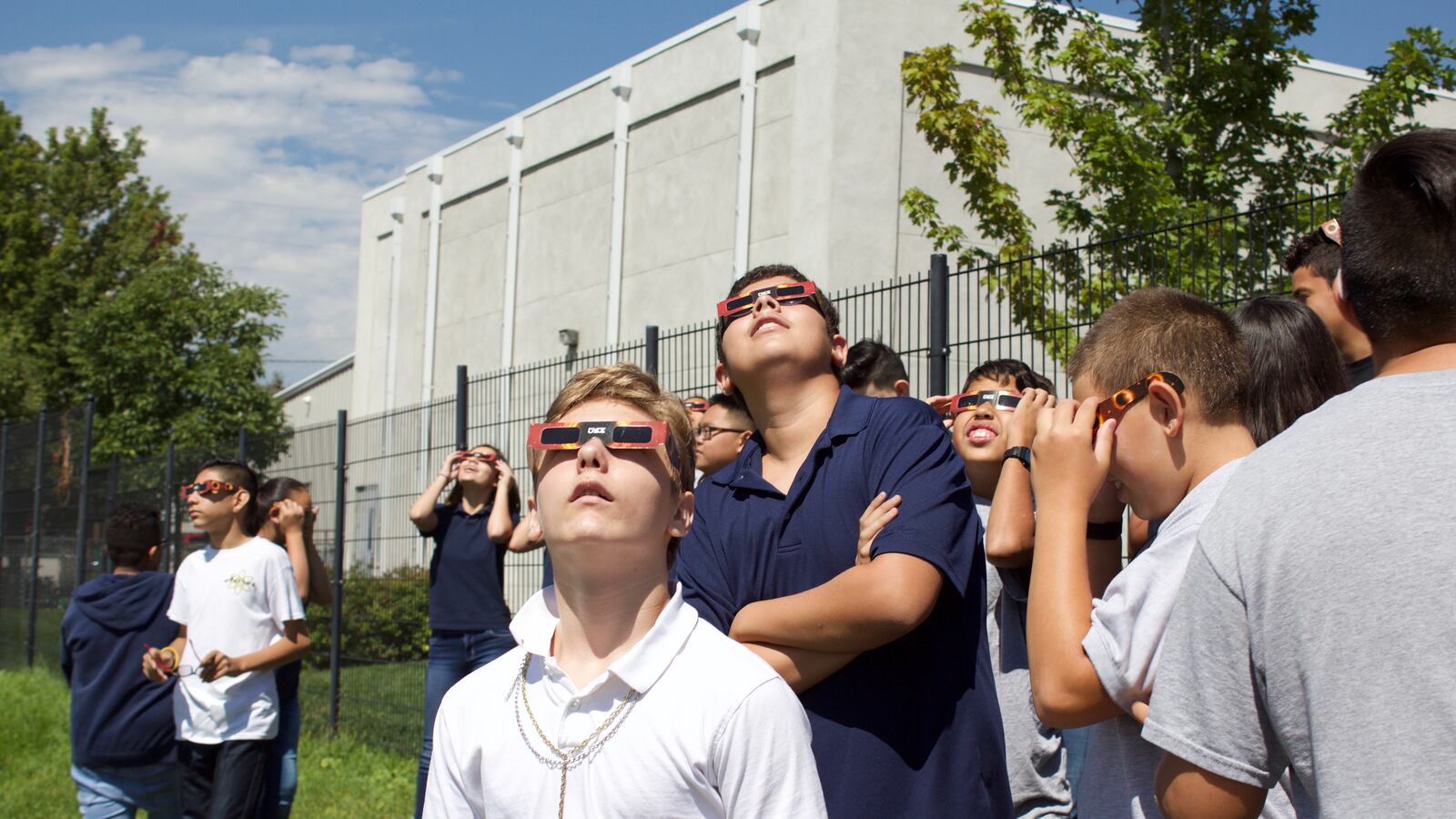Just minutes before the peak viewing window of the United States’ first total solar eclipse in 99 years, science teacher Randy Vanderhurst excitedly waved a model of Earth orbiting the sun before his class of 6th graders.
In his raspy, booming voice, he asked students — broken up into clusters labeled “Awesome” and “Brilliant” — to answer questions about how the eclipse works.
“Awesome, please tell Brilliant why you think the eclipse is going to move across the country,” Vanderhurst told his students at Westminster’s M. Scott Carpenter Middle School.
When the moment finally arrived Monday, hundreds of kids at Scott Carpenter flooded out the school’s back doors and onto a large field. They carefully placed their red and black Eclipse USA glasses over their eyes to examine the sun, which looked like a bright orange sliver through the lenses.
Echoes of “Whoa!” and “That’s so cool!” scattered across the field. One girl was more dismissive, suggesting it was all a waste of time.
Nationwide, people clogged parks and drove in throngs of traffic to get their best glimpse of the “Great American Eclipse,” which arced across the country from Oregon to South Carolina. To make the phenomenon a teachable moment, educators across the country prepared special lessons, projects and safety plans — and Colorado teachers were no exception.
Scott Carpenter Middle School had special cause to pay attention: It is named after a Boulder-born astronaut who became the second American to orbit the earth. The school has long emphasized planetary science in its curriculum, making the eclipse a must-see event for its over 500 students.
Principal Tom Evans said once a teacher drew the impending eclipse to his attention in July, he set to work right away securing “legit” eclipse glasses for everyone in the building to safely view the event.
Over the Denver area, the eclipse reached about 93 percent totality, making Scott Carpenter’s lawn a decent viewing spot.
“It’s pretty cool we don’t have to travel to see it,” said Manuel, an 8th grader at the school.
Jeff Sands, who teaches 7th and 8th grade science, said students did not seem to be testing their luck by starting directly in the sun, which during an eclipse could lead to permanent vision damage.
“You’ve got 30 kids in a classroom and it’s kinda hard to keep track of them all,” Sands said. “These guys seem to be pretty responsible, though. I’m pretty impressed they’re listening to us.”
After a little more than 20 minutes of viewing, Evans, the principal, started directing the meandering middle schoolers back to their classes. He said he felt the logistics went “smoothly.”
Once all the students returned inside, they settled in to write reflections on the eclipse, and where they hope to be the next time such a celestial event passes. The next visible total solar eclipse over the United States will come in 2024, when the 6th graders at Scott Carpenter will be seniors in high school, Evans said.
“Scott Carpenter was an individual who obviously at some point in his life looked up at the sky and drew some inspiration,” he said. “It’s only fair that we give these kids the same opportunity because who knows, this may have sparked their interest as well.”

